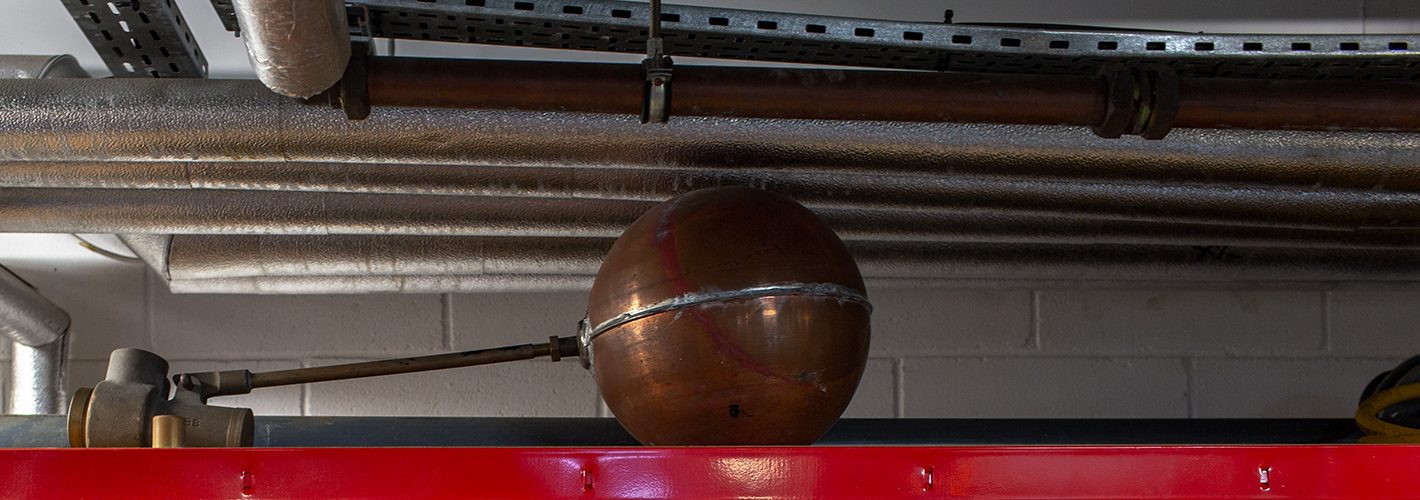Today we got an introduction by Kevin the engineer on the pumping systems that prevent Eden from flooding. This insight fundamentally changed our view on the Eden Project plus it was a so interesting that we came back to record some of the pumps.
(We had such a blast. You can hear some of our recordings here and here. But for now, maybe you want to learn something about the piece of art of engineering that these pumping systems really are and the water cycles that they provide for this artificial nature reservoir.)
Eden lies below sea level.
If it were not for the pumps, the pit it is built into would be flooded with ground water. And rain water. And since it’s inhabited, also with wastewater.
Only the almost continuously running pumping system assures that all the precious plants and biome architecture are not becoming an underwater garden.
There are several water cycles:
Rainwater that falls on the biomes and other buildings is collected in two tanks, each the size of an (upright or horizontally placed) bendy bus. This water is filtered and then used for some of the toilet flushing and after further treatment for the waterfall, irrigation of the plants in the biomes and the gardens.
Ground water (grey water) continuously emerging from below is collected separately, in tanks even more enormous than the rainwater tanks. This water is being pumped through a filtering system of various densities. It is then being treated chemically and stored in an above ground tank.This water then serves for flushing most of the toilets and, in case the rainwater reserve gets depleted during dry seasons (as was the case this very hot summer), to irrigate the Eden plants.
And then there is a storm water system which in case of high water income regulates the water massen of a variety of primary water tanks (including lakes) of the different systems. This system is sort of a sophisticated counterbalance valve: It pumps the overflowing water to a separate storm storage tank and from there via independently working pumps and several lakes on different altitudes out of the Eden pit. Of course the water is not released there just like that which would be a lot today and tomorrow none because there is no rain tomorrow but there was today… The various levels and pumps already regulate quite a bit but nature (including humans) can be quite shocked and even damaged by only roughly regulated water flow – be it too much or not enough. So another controlling system adjusts the finally exported water which is, effectively, a little river. Beautiful.
Talking about the storm water system, Kevin repeatedly mentioned a lake. We had never seen a lake in the direction where he was pointing. It was curious, we were curious, so finally we asked about the lake. We were quite saddened by the information, that this beautiful lake and its spring that mark the very center of Eden (and that work as one of the levels of the storm water system) was covered a few years ago with the big central stage.
The ducks that used to live here have partially moved to the middle lake (just outside the public gardens). About the fish we don’t know and the people who used to come here, well, they have not.
These were probably the most exciting ones of the water cycles of Eden, but the remaining two also each occupy a superlative: They are the cleanest and the dirtiest. The latter is of course the foul water system, it includes several big tanks that collect the waste water from the loci of the site. From there this water is being pumped to one central tank and from there to an external purification plant. And then there is the potable water which is brought in externally. Even though after the various treatments the former rainwater would in fact be drinkable, the hygiene standards are even more precisely and steadily met by importing the water. The fire ring is also fed externally. So to sum it up, Edens water cycles are super safe, clean (and dirty where they may) and offer an incredibly creative system realised by excellent engineering skills.
We learned on our field trip from Rinsey to Porthleven about the rich history of Cornish pumping engineering that was developed for ore mining. It was yet another eye opener. To see how the Eden Project, exotic as it may seem, accumulates so much of the history and knowledge of the environment it grows in.
If you get a chance to get a tour with Kevin or if there should ever be a public tour on the Eden water cycles (which we so much hope for, be proud of this, show it off!) – take it!
